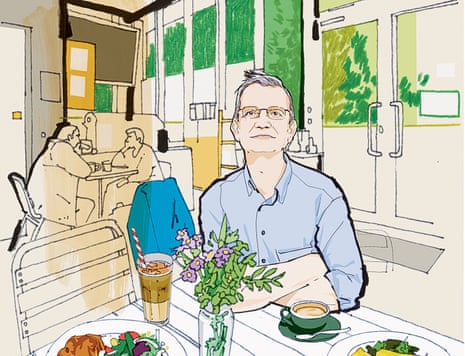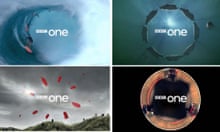I arrive at Martin Parr’s new gallery in Bristol soaked through having tramped, in sheeting rain, around the former industrial site in which it is housed, trying to find it. Parr, Britain’s foremost documentary photographer, is up a ladder in the large back office of the pristine space, doing one of the things you guess he secretly likes doing best, filing pictures. I stand dripping on his new floor while he comes down and casts his never quite neutral eye over me. He is notably dry, in all senses. It is a small relief that he does not have a camera to hand.
Parr’s photographs have always been about juxtaposition and incongruity. He made his name photographing the tribes and clubs of northern England, Hebden Bridge’s “Ancient Order of Henpecked Husbands” and so on. That obsession continues, 40-odd years on, in the BBC “idents” that he currently choreographs (those punctuation marks between programmes of sea-swimmers and wheelchair rugby players and night kayakers designed to suggest our eccentric “oneness”). Through his viewfinder the way we would like to see ourselves is set against the way that others see us.
After a brief skirt around the opening exhibition in his gallery – his own recent photographs of the Black Country, proud gardeners with prize-winning leeks, tattooed teenagers on the pull – he takes me to his regular lunch haunt, an excellent little wholefood cafe in the Victorian graveyard across the road. Parr enjoys the fact of a restaurant in a graveyard, of course he does, but also insists archly that he wanted to make himself a cheap date as a gesture toward troubled newspaper finances (in the spirit, he suggests, of “while you are here we have a favour to ask”). We step across the building site puddles outside his gallery, him in proper boots, me in leaky shoes, and then past the carved angels and overgrown headstones to the steamed-up oasis of warmth that is Kate’s Kitchen. He orders what he always orders from Kate, a croque and a ginger beer (a typical Parr-like continental gesture set against Famous Five posh pop, I find myself noting).
In conversation Parr has the manner of a man who has overcome youthful awkwardness to find his mature voice and comfort in his skin. He is 65 now, and tall enough to have had to take many of his pictures on his knees. His takes his role as a father figure to “underappreciated and undervalued” British street photography seriously. The new gallery space is a gesture of that intent. He has long bought the work of younger peers; he now has a place to store and exhibit it. He established the gallery foundation in part with the sale of 12,000 photography books, collected over 30 years, to the Tate.
In this sense, Parr says, he is on a one-man mission to help the British to love the most democratic of arts. “Photography is not trusted here. If I have a show in Paris, all the press will be there to review it. If I have a show in London I am very lucky to even get a paper to mention it.” Perhaps, I suggest, it is that as a nation we don’t want to look at ourselves too closely, for fear of what we might see.
When Parr started out looking at Britain, it was with an edge of satire and a pinch of cruelty. Social-realist photography had traditionally been an exercise in gritty black-and-white compassion and solidarity. He refused that nostalgia for post-industrial communities, had us look at them in harsher light, using flash in bright sunshine, making slabs of pale British flesh look raw, characteristically dwelling on the garishness of fast food and consumer extremes. In the years since, you wouldn’t say his vision has mellowed exactly, rather that our way of seeing has caught up with it.
When Parr was first proposed as a member of the Magnum collective, its guiding light, Henri Cartier-Bresson dismissed him as being “from a totally different planet” from the inclusive humanist tradition he represented. It says something about Parr’s reserved charm, and his vision, that he overcame that hostility to eventually be elected president of Magnum, a role he fulfilled until this summer.
You don’t have to talk to Parr for long to experience that charm, to understand why people let him photograph them. He has a kind of unobtrusive authority in his manner, a studious curiosity with a persuasive hint of subversion. At our corner table we talk a little about where those traits came from.
Parr grew up in Epsom in Surrey, a collector of comic books, the son of keen ornithologists. He got his start in photography when as a boy he used to travel up to stay with his grandfather in Yorkshire in the holidays. He was fascinated first by the shift in tone.
“There was a community in Yorkshire there that we did not really have where I was a kid,” he says. “I was really taken with that.” Luckily, his grandfather, a keen amateur photographer, gave him the means to capture that spirit too. “He was a pictorialist, working with ‘bromoil’ a particular technique where you bleach out the picture and then re-ink it using brushes. And he was in a circle who sent round bromoils to each other and critiqued each other’s work.”
All this was fascinating, but Parr insists that for him it has never been about craft. His interest was always in what happened in front of the lens rather than in the processing lab. “It is about story,” he says. “It doesn’t matter what platform it is on or how it is taken, you still have to begin with story. Hook someone in, interest them.”
These days, he suggests, there is only really one story in town. “Try as you might in Britain, you simply cannot get away from Brexit now, it infects every other story.” Parr likens the current social climate to the divisions of the 1980s in which he made his name. “One of the things that galvanised photographers then was a dislike of Thatcherism, and we are in the same position. It is almost like a therapeutic process to examine your relation to these things, to this history. That is what I use the camera for.”
He was not, he suggests, much surprised by the referendum result, knowing the fabric of the country as he does. “The vote was really an up yours to the southern elite, delivered by the people who probably will be most damaged by the result,” he says.
Parr has lived in Bristol for nearly 40 years. Though he’d like to think he is at one remove from the London elite he insists that however hard we try he and I “are in a bubble”. I’m quite taken with the idea that he considers us social equals since the best of his prints fetch up to £10,000 at auction. He, in turn, is delighted by the idea that I work for the metropolitan media and (“let me guess”) my long-ago degree was from Cambridge. “We are all cliches really,” he says, with a grin.
He sections the last part of his croque madame and sips at his ginger beer. The tensions in our divided nation are a crucial chapter in what he sees as his life’s vocation, observing the British. His collector’s mind tries to fill in all the gaps in this ongoing album.

This year he has been looking at the market towns and farmworkers of Lincolnshire, a strong Leave area, for whom leaving may well be catastrophic. He has also had access to Oxford University for a couple of years, fascinated by the “old costumes, the cutting-edge research, the lack of diversity”. In a similar spirit he recently did projects on the guilds of London, squaddies in Germany, Christ’s Hospital school and its Tudor uniform.
I wonder if in this quest he gets more hostility than he used to. It must be hard these days to be a bloke with a camera on a beach, for example?
“It is an occupational hazard,” he suggests. “People are certainly more paranoid. You stand and fall on whether you can hold a conversation and engage.” Charm doesn’t always work; he admits he is exploring the possibilities of a telephoto lens. Still, he insists he goes out on assignment with a spring in his step.
After good coffee and cakes, (“what’s not to like?”) we walk back across the graveyard to the studio, where he proudly shows me his current favourite collection, of Russian space dog ephemera, before getting back to stocking his shelves, while I head back out into the very British rain to wait for a bus back to town, seeing Martin Parr pictures in every raincoated face and behind every windscreen that passes.
See Martin Parr’s work in a new range of merchandise including coasters, trays and placemats for Magnum Photos at plinth.uk.com; Martin Parr Foundation, 316 Paintworks, Bristol BS4 3AR











Comments (…)
Sign in or create your Guardian account to join the discussion